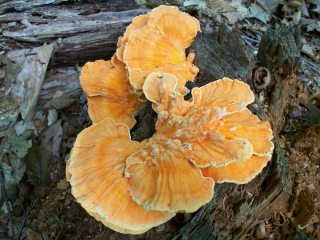PolyPEET is a NSF funded research project that focuses on taxonomy and evolution of the Polyporales (Basidiomycota, Fungi).
The goals of this project are:
1) To train the next generation of fungal taxonomists with expertise in morphological and molecular systematics of Polyporales
2) To produce comprehensive modern monographs in selected genera of Polyporales, and to contribute toward a higher-level taxonomic framework for the entire order
3) To create informatics resources for Polyporales,including resources for mycologists and the general public
4) To promote development of an international community of taxonomists with interests in Polyporales
5) To encourage participation in science by members of underrepresented groups
6) To raise awareness about mycology among high school students and educators.
The Polyporales is a diverse clade of Basidiomycota that is composed mostly of polypores (e.g., bracket fungi) and corticioid fungi (resupinate, crust-like forms), with a few gilled mushrooms and others. Understanding of the higher-level relationships of Polyporales has advanced dramatically in recent years, but family concepts, generic limits and species-level taxonomy remain highly problematical. Challenges are particularly great in the corticioid fungi, which are morphologically cryptic and have been neglected by most mycologists. As in all groups of fungi, it is likely that the described diversity of Polyporales vastly underestimates their actual diversity.
Molecular characters are extremely valuable for taxon delimitation in Polyporales, while morphology remains the primary basis for identification. Unfortunately, the existing major taxonomic resources for Polyporales were all created prior to the full development of fungal molecular systematics, and they do not incorporate this critical source of characters. Conversely, many recent molecular phylogenetic studies are of limited taxonomic utility, because they have limited sampling, rely on single-gene analyses, fail to incorporate morphology and nomenclature, or do not produce identification tools. There is, therefore, a pressing need to train a new generation of Polyporales taxonomists who are equally well-versed in molecular and morphological approaches.

